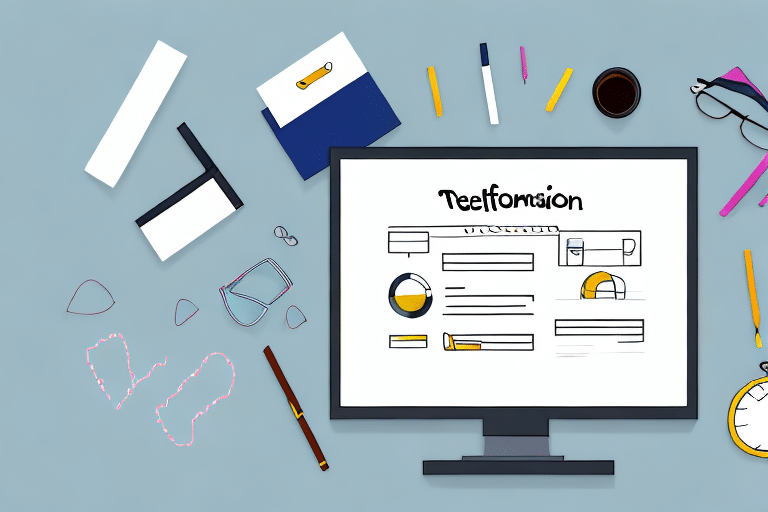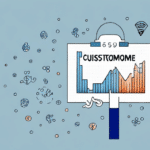Understanding Customer Retention Management
As a customer retention manager, your primary responsibility is to ensure that customers remain loyal to your business and continue to patronize your products or services. This role is becoming increasingly crucial in today's business landscape, where competition is fierce and customers have numerous options to choose from. Your job is to develop and implement effective customer retention strategies that help your business retain its customers and drive growth.
The Role and Responsibilities of a Customer Retention Manager
Role of a Customer Retention Manager
A customer retention manager works to increase customer satisfaction and loyalty by identifying and addressing issues that could harm the customer experience. This involves interacting with customers to gain feedback and using that feedback to create retention strategies that enhance customer satisfaction.
Key Responsibilities
- Analyzing customer data to identify trends and patterns, including purchase history and behavior.
- Developing targeted retention strategies based on data insights.
- Collaborating with other departments to address product or service issues.
- Implementing and managing loyalty programs.
- Engaging with customers regularly to collect feedback and ensure their needs are met.
- Monitoring and measuring the effectiveness of retention efforts using relevant metrics.
The Importance of Customer Retention in Driving Business Growth
Customer retention is essential for maintaining a stable revenue stream and fostering long-term business growth. Retaining existing customers is not only more cost-effective but also contributes to increased customer lifetime value (CLV).
Cost-Effectiveness
Studies have shown that acquiring new customers can cost up to five times more than retaining existing ones. According to the Harvard Business Review, increasing customer retention rates by just 5% can increase profits by 25% to 95%.
Positive Word-of-Mouth Marketing
Satisfied customers are more likely to recommend your business to friends and family, which can help you acquire new customers at a lower cost. In fact, according to a Nielsen study, 92% of consumers trust recommendations from friends and family more than any other form of advertising.
Identifying Areas for Improvement
Customer retention efforts provide valuable insights into what is working well and what needs improvement. By listening to feedback from existing customers, businesses can make strategic decisions to enhance the overall customer experience, leading to higher retention rates and sustained growth.
Developing Effective Customer Retention Strategies
Understanding Your Target Audience
The foundation of any successful retention strategy is a deep understanding of your target audience. Conducting market research helps you gain insights into customer preferences, pain points, and motivations. This knowledge allows you to tailor your retention strategies to meet specific customer needs.
Personalized Communication
Personalized communications make customers feel valued and appreciated. Utilizing data analytics, businesses can create customized messages and offers that resonate with individual customers, enhancing their loyalty and satisfaction.
Loyalty Programs and Incentives
Implementing loyalty programs and offering incentives encourage repeat business. Rewards such as discounts, exclusive offers, and points systems can motivate customers to continue choosing your products or services over competitors.
Exceptional Customer Service
Providing outstanding customer service is a critical component of retention strategies. This involves being responsive to customer inquiries, resolving issues promptly, and going above and beyond to exceed customer expectations. Exceptional service builds trust and fosters long-term loyalty.
Continuous Monitoring and Improvement
Retention strategies should be dynamic and adaptable. Regularly monitoring performance metrics and gathering customer feedback allows businesses to refine their approaches and address any emerging challenges effectively.
Measuring Customer Loyalty and Satisfaction
Accurate measurement of customer loyalty and satisfaction is essential for evaluating the success of retention strategies. Key metrics and tools can provide valuable insights into customer behavior and preferences.
Customer Retention Rate
This metric calculates the percentage of customers who continue to do business with a company over a specific period. A high retention rate indicates strong customer loyalty and effective retention strategies.
Net Promoter Score (NPS)
NPS measures customer willingness to recommend your business to others. It is a reliable indicator of overall customer satisfaction and loyalty. Tools like Net Promoter offer frameworks for calculating and interpreting NPS.
Customer Lifetime Value (CLV)
CLV estimates the total revenue a business can expect from a single customer over the duration of their relationship. Understanding CLV helps businesses identify high-value customers and prioritize retention efforts accordingly.
Customer Satisfaction Surveys
Regularly conducting surveys allows businesses to gather direct feedback from customers. Tools such as SurveyMonkey and Typeform facilitate the creation and distribution of effective satisfaction surveys.
Analytics Software
Data analytics tools like Google Analytics and Mixpanel help businesses track and analyze customer behavior, providing actionable insights for improving retention strategies.
Addressing Common Challenges in Customer Retention
Customer retention managers often encounter various challenges that can impede their efforts to maintain a loyal customer base. Effectively addressing these challenges requires strategic planning and collaboration across departments.
Customer Churn
Customer churn, the rate at which customers stop doing business with a company, is a significant challenge. Identifying the root causes of churn through data analysis and customer feedback is essential for developing targeted strategies to reduce it.
Product Dissatisfaction
Product or service dissatisfaction can lead to decreased loyalty and increased churn. Investing in quality control, gathering continuous feedback, and making necessary improvements are critical steps to address this issue.
Intense Competition
In highly competitive markets, retaining customers requires distinguishing your offerings through unique value propositions, excellent customer service, and personalized experiences that set your business apart from competitors.
Handling Negative Experiences
Customers who have had negative experiences can be challenging to retain. Establishing a clear process for addressing complaints, providing timely resolutions, and offering compensations or incentives can help recover and retain these customers.
Collaboration Across Teams
Effective customer retention often requires collaboration between sales, marketing, and customer support teams. Ensuring seamless communication and joint efforts across departments enhances the overall retention strategy.
The Future of Customer Retention Management
The landscape of customer retention management is evolving with advancements in technology and changing customer expectations. Staying ahead of these trends is crucial for maintaining a competitive edge.
Artificial Intelligence and Machine Learning
AI and machine learning are becoming integral in analyzing vast amounts of customer data to predict behavior, personalize interactions, and automate retention efforts. Tools like Salesforce Einstein leverage AI to enhance customer relationship management.
Big Data Analytics
Big data analytics enables businesses to gain deeper insights into customer preferences and behaviors. Utilizing platforms such as Tableau and SAS Analytics helps in making data-driven retention strategies more effective.
Personalization
Personalized experiences are paramount in retaining customers. Tailoring communications, offerings, and services to individual customer needs fosters a stronger emotional connection and loyalty.
Social Media Engagement
Leveraging social media platforms for customer engagement is becoming increasingly important. Social media allows businesses to interact with customers in real-time, respond to inquiries promptly, and build a community around their brand.
According to a Statista report, over 4.9 billion people use social media worldwide as of 2023, making it a vital channel for customer engagement and retention.
Omnichannel Strategies
Implementing omnichannel strategies ensures a seamless customer experience across all touchpoints, including online, in-store, mobile, and social platforms. Consistency in service and communication across channels enhances customer satisfaction and loyalty.
Adaptability to Changing Customer Needs
The ability to adapt to evolving customer preferences and market conditions is essential for future-proofing customer retention strategies. Continuous innovation and flexibility enable businesses to meet and exceed customer expectations consistently.
Conclusion
The role of the customer retention manager is pivotal in today's competitive business environment. Effective retention strategies not only maintain a loyal customer base but also drive business growth and profitability. Understanding your target audience, building strong relationships, measuring loyalty and satisfaction, and proactively addressing challenges are key components of successful customer retention management. Embracing future trends such as AI, big data analytics, and personalized engagement will further enhance your ability to retain customers and sustain long-term business success.








